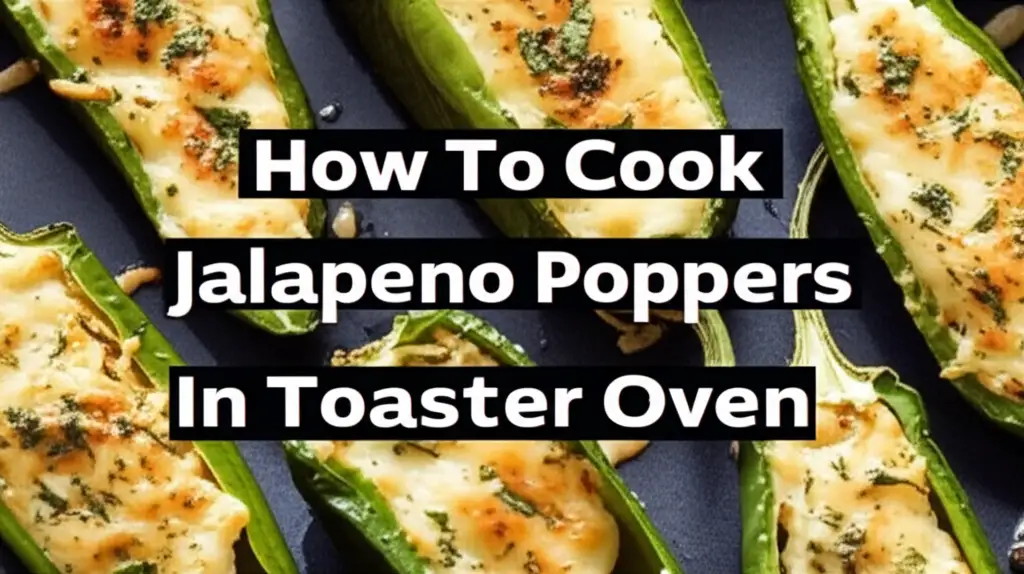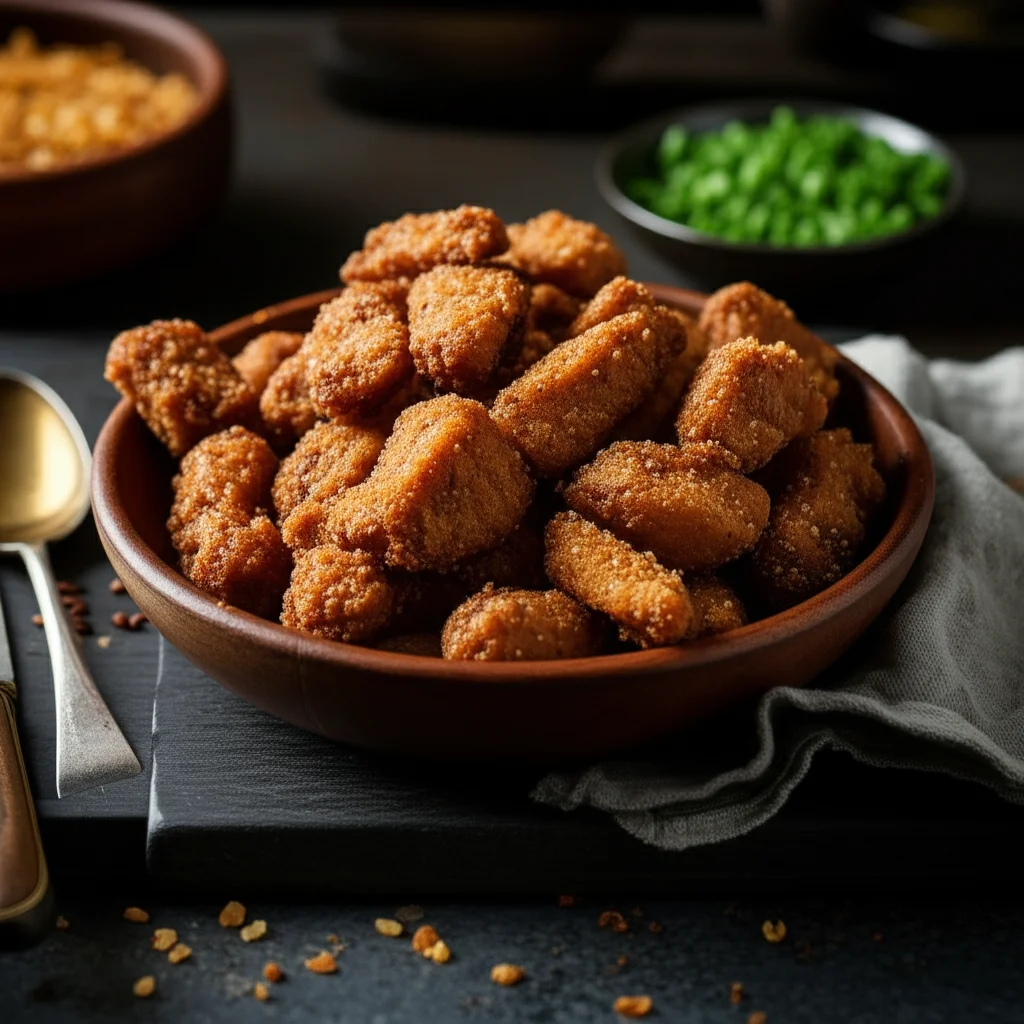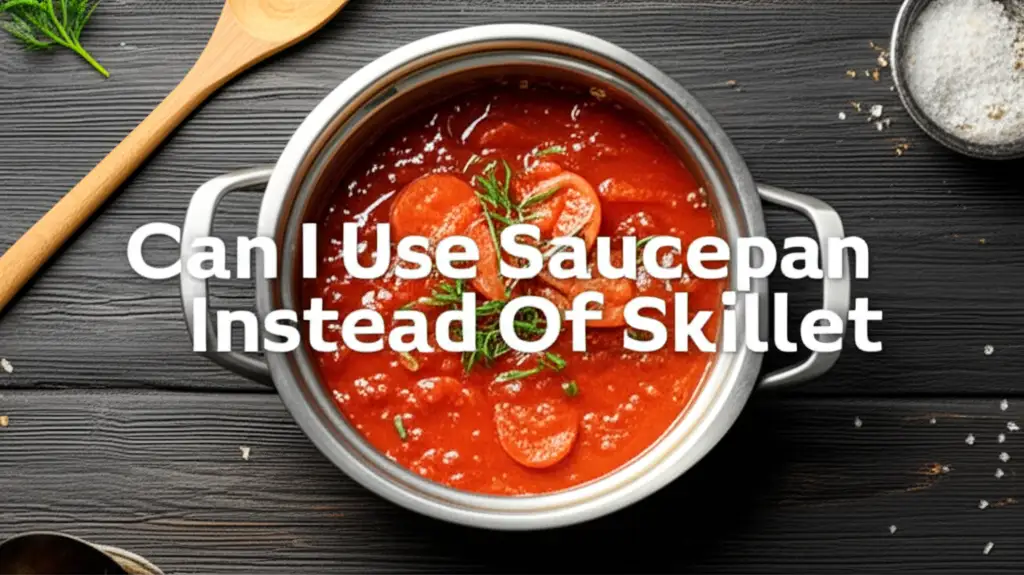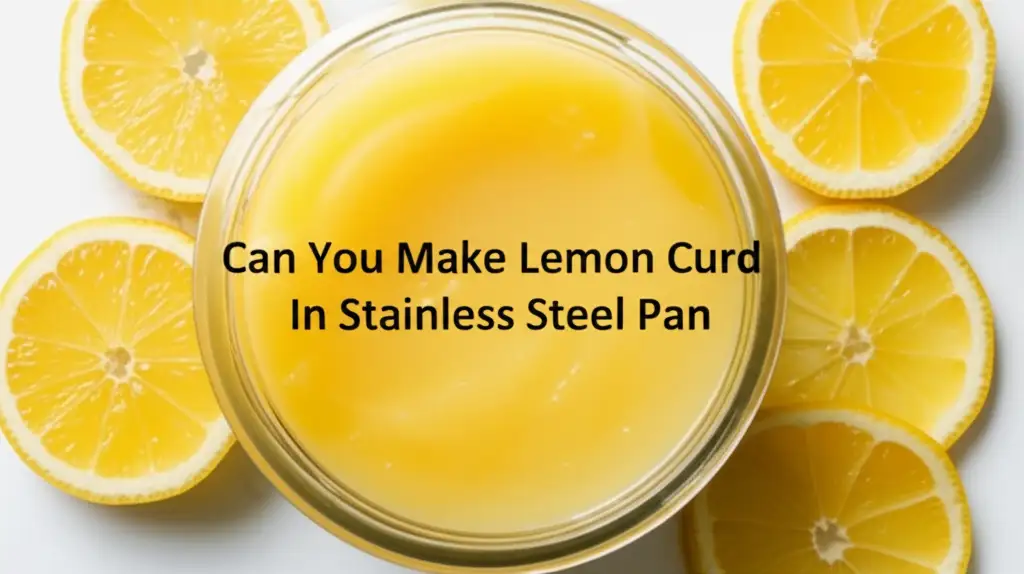· Todd Martin · Cooking Tips · 20 min read
How To Cook Zucchini Noodles In Frying Pan
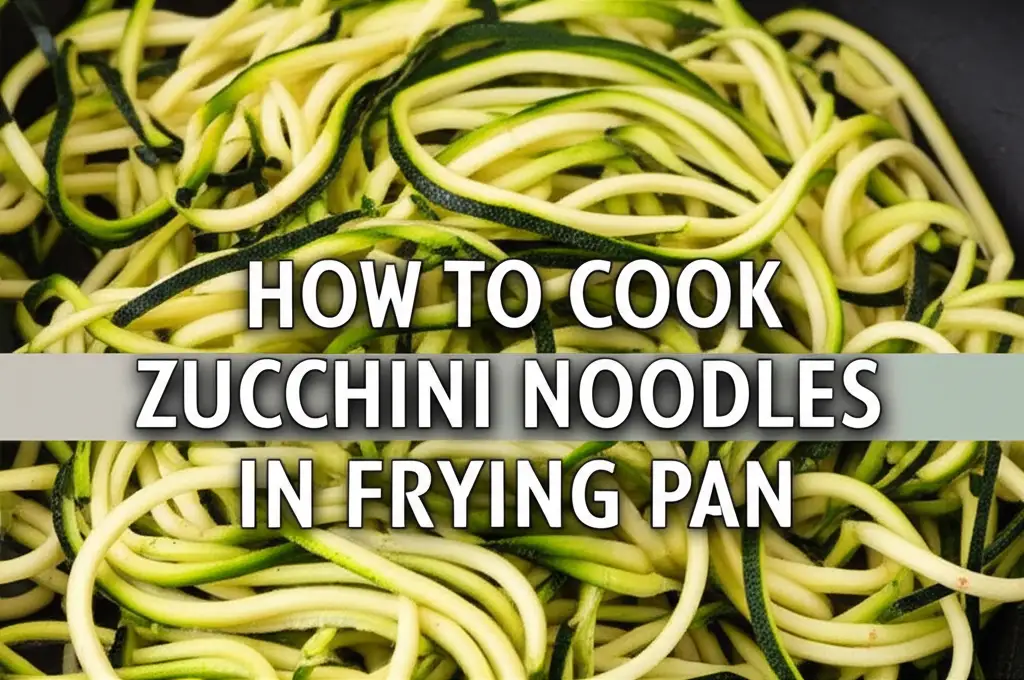
Master Zucchini Noodles: Quick Frying Pan Cooking
Are you searching for a fast, healthy, and incredibly versatile way to enjoy vegetables? Learning how to cook zucchini noodles in a frying pan is your answer. Zucchini noodles, often called zoodles, offer a fantastic low-carb, gluten-free alternative to traditional pasta. Cooking them in a frying pan makes the process quick and simple, perfect for busy weeknights. You can achieve a tender-crisp texture that complements almost any sauce or protein.
This article guides you through everything needed to cook perfect zucchini noodles. We will cover essential tools, the step-by-step cooking process, and tips to avoid common mistakes like watery zoodles. You will also discover various flavor combinations and proper pan care. By the end, you will feel confident making delicious and healthy zucchini noodles in your own kitchen. This guide helps you transform a simple vegetable into a satisfying meal.
Takeaway
- Choose Fresh Zucchini: Select firm, medium-sized zucchini for the best noodles.
- Prepare Zoodles Properly: Use a spiralizer or peeler to create consistent noodles.
- Remove Excess Moisture: Salt and drain zucchini noodles before cooking to prevent sogginess.
- Use a Hot Pan: Sauté zucchini noodles quickly in a preheated frying pan for a tender-crisp texture.
- Do Not Overcook: Zoodles cook fast; stop cooking once they are just tender.
- Flavor Simply: Add garlic, herbs, and a light sauce to enhance their natural taste.
You can cook zucchini noodles in a frying pan by sautéing them over medium-high heat for 3-5 minutes. First, ensure the pan is hot with a small amount of oil or butter. Next, add the zoodles and toss them frequently. Cook until they are tender-crisp, not soggy.
The Advantages of Frying Pan Zucchini Noodles
Cooking zucchini noodles in a frying pan offers several distinct advantages. This method is incredibly fast, making it ideal for quick meals. You can have a batch of fresh zoodles ready in minutes. It also allows for precise control over the cooking process. You see exactly how the noodles are cooking, which helps prevent overcooking.
A frying pan distributes heat evenly, ensuring each zucchini strand cooks consistently. This leads to a tender-crisp texture, which is often preferred over mushy zoodles. Furthermore, cooking in a frying pan requires minimal equipment. Most kitchens already have a suitable pan. This makes it a convenient and accessible cooking method for everyone. The direct heat helps to evaporate moisture quickly, a key factor in achieving perfect zucchini noodles.
Many people choose zucchini noodles for their health benefits. They are low in calories and carbohydrates, making them a good option for various dietary needs. They also pack vitamins, minerals, and fiber. The frying pan method preserves these nutrients because of the short cooking time. You get all the goodness of fresh zucchini without lengthy cooking processes.
Frying pan cooking also provides a fantastic base for flavor infusion. You can easily add garlic, herbs, or spices directly to the pan with the noodles. This allows the zoodles to absorb these flavors as they cook. It creates a more delicious and aromatic dish. Whether you aim for a simple side dish or the base of a main course, the frying pan method offers versatility. It is a reliable choice for delicious and healthy meals.
Essential Tools and Ingredients for Zucchini Noodle Success
Before you begin cooking zucchini noodles, gather the right tools and ingredients. Having everything prepared makes the cooking process smooth and efficient. The quality of your ingredients directly impacts the final dish. Choosing fresh items ensures the best flavor and texture. Proper tools simplify preparation and improve cooking results.
Necessary Equipment
- Spiralizer: This is the most common tool for making zucchini noodles. It quickly transforms zucchini into uniform strands. Various types exist, including handheld, countertop, and electric models. Choose one that fits your budget and frequency of use.
- Vegetable Peeler (Julienne): If you do not have a spiralizer, a julienne peeler is a great alternative. It creates thin strips, similar to noodles, though perhaps not as perfectly round.
- Sharp Knife: A good knife is useful for trimming zucchini ends and other general prep.
- Large Frying Pan: A non-stick frying pan or a well-seasoned cast-iron pan works best. A pan with a wide surface area allows the noodles to spread out and cook evenly. This prevents steaming and promotes browning.
- Tip: Learn how to use a stainless steel frying pan without sticking if you prefer that type.
- Tongs or Spatula: These tools are essential for tossing and stirring the zucchini noodles in the hot pan. They help ensure even cooking and prevent sticking.
- Colander and Paper Towels: You will need these for draining excess moisture from the zucchini noodles before cooking. This step is critical for preventing soggy zoodles.
Key Ingredients
- Fresh Zucchini: Select firm, medium-sized zucchini. Avoid very large zucchini, as they tend to have more water content and larger seeds, which can make for watery and less appealing noodles. Medium zucchini have the ideal balance of flesh and moisture. You might want to understand how to clean zucchini properly before spiraling.
- Cooking Oil: Choose an oil with a high smoke point, such as olive oil, avocado oil, or grapeseed oil. This prevents the oil from burning at the high heat needed for quick sautéing. A small amount is usually sufficient. You can also use butter for a rich flavor, similar to how you cook steak in a frying pan with butter.
- Salt: Fine sea salt or kosher salt is used for pre-salting the zucchini. This draws out excess moisture, which is vital for preventing soggy noodles.
- Black Pepper: Freshly ground black pepper adds a simple yet effective seasoning.
- Garlic (Optional): Minced garlic can add a wonderful aroma and flavor to your zucchini noodles.
- Herbs (Optional): Fresh herbs like parsley, basil, or oregano enhance the dish’s freshness. Dried herbs also work well.
- Sauce or Toppings (Optional): Have your favorite sauce ready. Zoodles pair well with pesto, marinara, light cream sauces, or simply a squeeze of lemon juice.
Having these items ready before you start cooking streamlines the process. This ensures you can focus on the technique for perfect zucchini noodles.
Step-by-Step Guide: How to Cook Zucchini Noodles Perfectly in a Frying Pan
Cooking zucchini noodles to perfection in a frying pan is a simple process. The key steps involve proper preparation, quick cooking, and careful timing. Follow these steps for tender-crisp zoodles every time. This method ensures maximum flavor and ideal texture.
Step 1: Prepare the Zucchini Noodles
First, wash your zucchini thoroughly under cold water. Pat them dry with a clean cloth or paper towel. Next, trim off both ends of each zucchini. Use your spiralizer to create the noodles. If your zucchini noodles are excessively long, cut them into more manageable lengths, about 6-8 inches. This makes them easier to eat and cook.
Once spiraled, the zucchini noodles will contain a lot of water. This water must be removed to prevent soggy zoodles. Place the zucchini noodles in a colander. Sprinkle them generously with salt. Let them sit for at least 15-30 minutes. The salt draws out excess moisture through osmosis. After resting, gently squeeze the noodles to release more water. You can do this by pressing them against the colander sides or by placing them on paper towels and pressing down. This step is crucial for perfect texture.
Step 2: Preheat Your Frying Pan
Choose a large frying pan that can accommodate your zucchini noodles without overcrowding. A non-stick pan works wonderfully for this. Place the frying pan over medium-high heat. Allow it to preheat for 2-3 minutes. A hot pan is essential for quickly searing the noodles and preventing them from becoming soggy. Add 1-2 teaspoons of your chosen cooking oil to the hot pan. Swirl the oil to coat the bottom evenly. You should see the oil shimmer slightly, indicating it is hot enough.
Step 3: Cook the Zucchini Noodles
Add the drained zucchini noodles to the hot frying pan. Do not overcrowd the pan. If you have a large batch of zoodles, cook them in smaller batches. This ensures even cooking and allows moisture to evaporate properly. Stir the noodles frequently with tongs or a spatula. You want to cook them quickly, for about 3-5 minutes. The goal is to make them tender-crisp, still slightly firm, but no longer raw.
Keep a close eye on the noodles. Zucchini cooks very fast, and overcooking leads to a mushy texture. If you are adding minced garlic or other aromatics, add them during the last minute of cooking. This prevents the garlic from burning. The noodles should still have a vibrant green color.
Step 4: Season and Serve
Once the zucchini noodles are tender-crisp, remove the pan from the heat immediately. Season the cooked noodles with freshly ground black pepper to taste. Taste the noodles before adding more salt, as they were pre-salted during the draining process. Add any desired fresh herbs, like chopped parsley or basil. Toss everything together gently.
Serve the zucchini noodles immediately. They are best enjoyed fresh off the pan. Zoodles make a fantastic base for various sauces, from marinara to pesto, or a simple lemon-garlic dressing. They also pair well with grilled chicken, fish, or steak cooked on a non-stick pan. Enjoy your perfectly cooked, healthy, and delicious zucchini noodles!
Achieving the Perfect Texture: Tips to Avoid Soggy Zoodles
The biggest challenge when cooking zucchini noodles is preventing them from becoming watery and mushy. Zucchini naturally contains a high water content. If not managed, this water releases during cooking, creating a steamy environment that overcooks the noodles. Achieving a tender-crisp texture is the ultimate goal. This section provides specific strategies to ensure your zoodles are firm and delightful, not soggy.
Pre-Salting is Non-Negotiable
This is perhaps the most important step for dry, firm zoodles. After spiraling, place your zucchini noodles in a colander. Sprinkle them generously with salt (about 1 teaspoon of kosher or sea salt per medium zucchini). Toss to distribute the salt evenly. Let them sit for at least 15-30 minutes. You will see water dripping out. The salt draws out moisture from the zucchini’s cells through osmosis.
After the resting period, gently squeeze handfuls of the noodles. You will be surprised by how much more water comes out. You can also press them between layers of paper towels to absorb even more moisture. This initial moisture removal significantly reduces the water released during cooking. Skipping this step almost guarantees soggy results.
Use High Heat and a Hot Pan
When you add zucchini noodles to a pan that isn’t hot enough, they will steam rather than sear. Steaming causes the zucchini to release water slowly and cook unevenly. Always preheat your frying pan over medium-high heat until it is sufficiently hot. Add a small amount of oil just before adding the noodles. The high heat quickly evaporates any remaining surface moisture. This helps the noodles cook rapidly and prevents them from becoming limp.
Do Not Overcrowd the Pan
Overcrowding the frying pan lowers the pan’s temperature. It also traps steam. When too many noodles are in the pan, they cannot properly brown or cook evenly. The released moisture has nowhere to escape. This turns the cooking process into steaming. Cook zucchini noodles in batches if necessary. Give them enough space in the pan to allow moisture to evaporate quickly. This ensures each strand makes direct contact with the hot surface.
Cook Quickly and Briefly
Zucchini noodles cook extremely fast. They usually need only 3-5 minutes in a hot pan. The moment they become tender-crisp, remove them from the heat. They continue to cook slightly from residual heat. Overcooking for even a minute can turn them from perfectly firm to watery and soft. Stay vigilant and toss them constantly to ensure even cooking. Their vibrant green color should remain, indicating they are not overdone.
Add Sauce Last
If you are serving your zucchini noodles with a sauce, add it at the very end. Once the noodles are cooked and off the heat, toss them with your warm sauce. Adding sauce too early, especially a watery sauce, will reintroduce moisture and make your zoodles soggy. Many people prefer to toss them with a little olive oil, garlic, and herbs first, then serve the sauce on the side or spoon it over individual portions. This preserves the delicate texture of the zoodles. By following these tips, you will consistently achieve firm, delicious, and non-soggy zucchini noodles.
Flavor Combinations and Serving Suggestions for Your Frying Pan Zoodles
Once you master cooking zucchini noodles in a frying pan, the culinary possibilities open wide. Zoodles are incredibly versatile. Their mild flavor makes them a perfect canvas for many different cuisines and ingredient combinations. They can serve as a light side dish or form the base of a hearty main course. Consider these ideas to elevate your frying pan zucchini noodles.
Simple and Fresh Pairings
Sometimes, less is more. For a quick and refreshing dish, toss your cooked zucchini noodles with:
- Garlic and Lemon: Sauté minced garlic in the pan for 30 seconds before adding zoodles. Finish with a squeeze of fresh lemon juice and a sprinkle of chopped parsley. This brightens the flavor.
- Pesto Perfection: After cooking, toss the hot zoodles with your favorite pesto. The heat from the noodles will gently warm the pesto. You can make homemade pesto or use a store-bought variety. Add a few cherry tomatoes for color and sweetness.
- Herbs and Olive Oil: A simple drizzle of high-quality extra virgin olive oil, fresh basil, oregano, or dill is often all you need. The natural flavor of the zucchini shines through beautifully. Add some freshly cracked black pepper for a bit of spice.
Protein Power-Ups
Zucchini noodles pair excellently with various proteins, creating a complete and satisfying meal. Cook your protein in a separate pan or in the same pan before the zoodles.
- Grilled Chicken or Shrimp: Slice cooked chicken breast or sautéed shrimp. Toss them with the finished zoodles. A light lemon-herb dressing complements this well.
- Meat Sauce: Use zoodles as a low-carb alternative to pasta with your favorite bolognese or meat sauce. Cook the sauce separately and spoon it over the hot zoodles. This is a great way to enjoy classic flavors without the heavy carbs.
- Fried Egg: For a quick breakfast or light lunch, top a bowl of hot zoodles with a perfectly fried egg. The runny yolk adds a rich sauce. Add a dash of sriracha or chili flakes for heat.
- Tuna or Salmon: Flaked canned tuna or cooked salmon can be mixed directly into the cooked zoodles. Add capers, olives, and a light vinaigrette for a Mediterranean twist.
Global Inspirations
Explore different flavor profiles from around the world with your frying pan zoodles.
- Asian Sesame Noodles: Toss cooked zoodles with a sauce made from soy sauce, sesame oil, rice vinegar, a touch of honey, and grated ginger. Garnish with toasted sesame seeds and chopped green onions.
- Italian Primavera: Add sautéed bell peppers, cherry tomatoes, spinach, and mushrooms to your zoodles. Finish with a sprinkle of Parmesan cheese.
- Mediterranean Delight: Combine zoodles with crumbled feta cheese, Kalamata olives, sun-dried tomatoes, and a light dressing of olive oil and red wine vinegar.
- Spicy Garlic Zoodles: Infuse oil with red pepper flakes and extra garlic. Sauté the zoodles until tender, then add a splash of vegetable broth or a little tomato paste for a spicy kick.
Remember to add sauces and wet ingredients after the zucchini noodles are cooked. This helps maintain their tender-crisp texture. Zucchini noodles absorb flavors well, so experiment with your favorite spices and ingredients. The versatility of frying pan zucchini noodles makes them a fantastic addition to your healthy cooking repertoire.
Troubleshooting Common Mistakes When Frying Zucchini Noodles
Even with a straightforward process, common pitfalls can lead to less-than-perfect zucchini noodles. Understanding these mistakes and how to avoid them ensures consistent success. Knowing what went wrong helps you adjust your technique. This section addresses the most frequent issues home cooks face when frying zucchini noodles.
Mistake 1: Soggy or Watery Zoodles
This is the number one complaint. Zucchini naturally contains a lot of water. If not managed, this water releases during cooking, steaming the noodles instead of searing them.
- Solution: Always pre-salt your zucchini noodles. Place them in a colander, sprinkle with salt, and let them sit for 15-30 minutes. Then, firmly squeeze out as much water as possible. Use paper towels to blot them dry. This crucial step removes significant moisture before cooking.
Mistake 2: Overcrowding the Pan
Adding too many zucchini noodles to the frying pan at once drops the pan’s temperature. It also creates a steamy environment. The noodles end up boiling in their own moisture rather than frying.
- Solution: Cook zucchini noodles in batches if necessary. Give them enough space in the pan so they form a single layer. This allows moisture to evaporate quickly and evenly, leading to better texture. A larger pan is always better.
Mistake 3: Overcooking
Zucchini noodles cook incredibly fast. Even a minute too long can turn them from tender-crisp to mushy. They continue to cook even after being removed from the heat due to residual heat.
- Solution: Cook zoodles for a very short duration, typically 3-5 minutes. Watch them closely. As soon as they are tender but still have a slight bite, remove them from the heat. Their color should remain vibrant green, not dull or translucent.
Mistake 4: Pan Not Hot Enough
Starting with a cold or insufficiently heated pan means the zucchini noodles will sit and release water before they start to sear. This contributes to sogginess.
- Solution: Always preheat your frying pan over medium-high heat for 2-3 minutes before adding oil or noodles. The pan should be hot enough to make the oil shimmer. This ensures an immediate sear, locking in flavor and preventing excess water release.
Mistake 5: Using Too Much Oil
While some oil is necessary for searing, too much oil can make the noodles greasy. It also doesn’t contribute to better texture.
- Solution: Use just enough oil to lightly coat the bottom of the pan, typically 1-2 teaspoons for a standard-sized pan. You only need a thin film for proper searing.
Mistake 6: Adding Sauce Too Early
Adding sauce, especially a watery one, to the pan while the zucchini noodles are cooking reintroduces moisture. This makes the noodles soggy.
- Solution: Cook the zucchini noodles separately until they reach the desired texture. Then, either toss them with a warm sauce just before serving or serve the sauce on the side. This preserves the noodles’ firm texture.
By understanding and correcting these common errors, you can consistently produce delicious, perfectly textured zucchini noodles in your frying pan. Practice makes perfect, and soon you’ll be a zoodle master.
Choosing the Right Zucchini and Storing Your Zucchini Noodles
The journey to perfect zucchini noodles begins long before you turn on the stove. Selecting the right zucchini and understanding proper storage for both fresh and prepared noodles are vital steps. These aspects significantly impact the texture and taste of your final dish. Freshness and quality are paramount.
Selecting the Best Zucchini
- Size Matters: Opt for medium-sized zucchini, typically 6-8 inches long and 1.5-2 inches in diameter. These zucchinis generally have fewer seeds and less water content than larger ones. Larger zucchinis tend to be more fibrous, watery, and can have a bitter taste. Small, young zucchini also work well and are often more tender.
- Firmness: Choose zucchini that are firm to the touch. Avoid any that feel soft, spongy, or have visible blemishes, cuts, or soft spots. A firm zucchini indicates freshness and good quality.
- Appearance: Look for bright, glossy skin without wrinkles or dullness. The color should be consistent. A vibrant green usually signals freshness.
- Weight: A good zucchini should feel heavy for its size. This indicates a healthy moisture content within the flesh, but not excessive water that would lead to sogginess.
Storing Fresh Zucchini
Proper storage helps maintain the zucchini’s freshness until you are ready to make noodles.
- Refrigerator: Store whole, unwashed zucchini in the crisper drawer of your refrigerator. Do not wash them until just before use, as moisture encourages spoilage.
- Avoid Plastic Bags: If possible, avoid storing them in airtight plastic bags. Zucchini benefits from some air circulation. A perforated plastic bag or simply placing them loosely in the crisper drawer is best.
- Shelf Life: Fresh zucchini typically lasts for about 4-7 days in the refrigerator when stored correctly. Use them within this timeframe for the best results.
Storing Prepared Zucchini Noodles
Once you have spiralized your zucchini into noodles, their storage needs change due to the increased surface area.
- Short-Term (Raw): If you spiralize zoodles a few hours before cooking, place them in a bowl lined with paper towels. Cover the top with another layer of paper towels and plastic wrap. Refrigerate them. The paper towels will absorb any released moisture. Use them within a day.
- Cooked Zoodles: Cooked zucchini noodles are best eaten immediately. They continue to release water and soften over time. If you have leftovers, store them in an airtight container in the refrigerator for no more than 1-2 days. Be aware they will likely be softer and more watery when reheated.
- Reheating Cooked Zoodles: Reheat cooked zoodles gently in a frying pan over medium heat for a minute or two, stirring frequently. Avoid the microwave if possible, as it tends to make them even soggier. The goal is to warm them through without further cooking.
By paying attention to zucchini selection and storage, you set yourself up for success. This ensures your frying pan zucchini noodles are always as fresh and delicious as possible.
Frying Pan Care After Cooking Zucchini Noodles
Proper care of your frying pan is crucial after cooking zucchini noodles. This ensures the longevity of your pan and prepares it for future culinary adventures. Different pan materials require specific cleaning methods. Following these guidelines will keep your frying pans in top condition.
General Cleaning Principles
Regardless of your pan type, always allow it to cool down completely before washing. Pouring cold water into a hot pan can cause warping, especially with cast iron or stainless steel. This thermal shock can damage the pan. Once cool, remove any food residue.
Non-Stick Frying Pans
Many people prefer non-stick pans for zucchini noodles because they prevent sticking and allow for cooking with less oil. Proper cleaning maintains the non-stick coating.
- Gentle Washing: Use warm, soapy water and a soft sponge or cloth. Avoid abrasive scrubbers, steel wool, or harsh detergents, as these can scratch and degrade the non-stick surface.
- No Dishwasher: Dishwashers can be harsh on non-stick pans. The high heat and strong detergents can damage the coating. Handwashing is always recommended.
- Stubborn Residue: For any stuck-on bits, soak the pan in warm, soapy water for 10-15 minutes. This usually loosens the residue, making it easy to wipe away.
- Tip: If your non-stick pan starts to lose its coating, you might wonder can I make my frying pan non-stick again?
Stainless Steel Frying Pans
Stainless steel pans are durable and can withstand higher heat, often producing a better sear. They can be more challenging to clean if food sticks.
- Soaking: For stuck food, fill the pan with warm water and a little dish soap. Let it soak for 15-30 minutes. This helps loosen burnt-on bits.
- Gentle Scrubbing: Use a sponge or a nylon scrubber. For tougher spots, a non-abrasive cleaner designed for stainless steel can be used. Avoid steel wool, which can scratch the surface.
- Drying: Always dry stainless steel pans thoroughly immediately after washing to prevent water spots and rust.
- Tip: Learn more about how to clean frying pans for comprehensive care.
Cast Iron Frying Pans
Cast iron pans are known for their excellent heat retention and non-stick properties when properly seasoned. Cleaning cast iron requires a different approach.
- No Soap (Generally): Avoid using dish soap, as it can strip the seasoning. For light cleaning, use hot water and a stiff brush or pan scraper.
- Drying and Seasoning: After washing, immediately dry the cast iron pan completely on the stovetop over low heat for a few minutes. While still warm, rub a very thin layer of cooking oil (like vegetable oil or flaxseed oil) over the entire surface. Wipe off any excess oil. This re-seasons the pan and prevents rust.
- Stubborn Residue: For very stubborn food, use coarse salt and a little oil as an abrasive paste, then scrub with a paper towel. Rinse with hot water and re-season.


